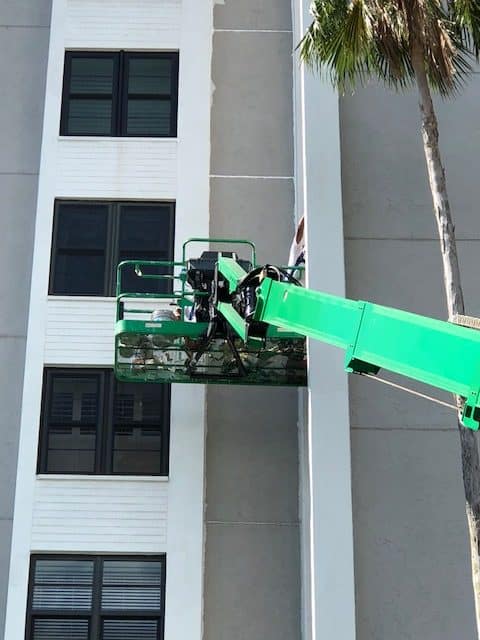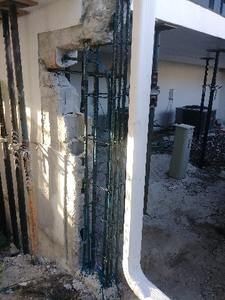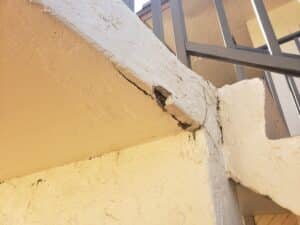Painting a high-rise building is a complex and challenging task. The height and scale of these structures present unique difficulties that require specialized skills and equipment. Proper planning and execution are essential to achieve high-quality and long-lasting results. High-rise painting not only enhances the aesthetic appeal of the building but also provides critical protection against weather elements, moisture, and environmental pollutants.
Safety is a paramount concern when working on high-rise painting projects. Ensuring the safety of the workers and the occupants of the building requires the use of appropriate equipment and adherence to strict safety protocols. Besides safety, the choice of materials and methods in high-rise painting can significantly affect the durability and performance of the paint job. It’s essential to select the right type of paint and apply it correctly to withstand the harsh conditions at such heights.
In this article, we will explore the various challenges associated with high-rise painting, the necessary equipment for safe and effective work, and best practices for surface preparation and priming. Additionally, we’ll discuss how to apply durable paint that will ensure long-lasting results. Understanding these aspects can help in executing a successful high-rise painting project that stands the test of time.
Understanding the Challenges of High-Rise Painting
Painting high-rise buildings presents unique challenges that are not encountered with other types of structures. One of the biggest difficulties is the height itself. Working at such heights requires specialized equipment and trained personnel to ensure safety. Wind and weather conditions can also pose significant risks. Strong gusts of wind can make it difficult to apply paint evenly and can even endanger workers on swing stages or scaffolds.
Another challenge is ensuring consistent coverage and adhesion of the paint. The exterior facade of high-rise buildings is often exposed to harsh elements, including strong UV rays, rain, and fluctuating temperatures. These factors can cause traditional paint to crack, peel, or fade over time. Therefore, it’s imperative to use high-quality, durable paints and coatings designed to withstand extreme conditions. By understanding these challenges, we can take the necessary precautions to achieve a safe and successful high-rise painting project.
Essential Equipment for Safe and Effective Painting
The right equipment is essential for painting high-rise buildings safely and effectively. One of the primary tools needed is a swing stage or scaffold. Swing stages are suspended platforms that can be raised or lowered, allowing painters to reach different parts of the building’s exterior. Safety harnesses and lanyards are also crucial to secure workers to the structure and prevent falls.
Another essential piece of equipment is a high-pressure sprayer. This tool helps to apply paint efficiently and uniformly over large surfaces. Additionally, it’s important to use weather-resistant paints and primers specifically formulated for high-rise applications. These products ensure that the paint adheres well and provides long-lasting protection against environmental factors. Using the right equipment and materials not only enhances the safety of the workers but also ensures a professional and durable finish.
Best Practices for Surface Preparation and Priming
Proper surface preparation is crucial for a long-lasting and visually appealing paint job on high-rise buildings. The first step is a thorough cleaning to remove dirt, debris, and any loose paint. Pressure washing is often used for this purpose, as it can efficiently clean large areas and reach high places. By cleaning the surface well, we create a better base for the primer and paint to adhere to.
Next, we need to inspect the surface for any cracks, holes, or damaged areas. These should be repaired using suitable fillers or sealants to ensure a smooth, even surface. Priming is another essential step. Using a high-quality primer not only helps the paint adhere better but also provides an additional layer of protection against moisture and UV rays. Applying the primer evenly and allowing it to dry completely is key to achieving a durable and long-lasting paint finish.
Applying Durable Paint for Long-Lasting Results
Choosing the right paint is vital for the success of a high-rise painting project. We recommend using paints specifically formulated for exterior use, as they are designed to withstand harsh weather conditions. These paints are usually more resistant to fading, cracking, and peeling, ensuring the building looks great for years to come. It’s important to apply the paint in multiple thin layers, rather than one thick layer, to achieve even coverage and prevent drips.
When applying the paint, using a high-pressure sprayer can help achieve uniform coverage quickly, especially on large surfaces. It’s also essential to follow the manufacturer’s instructions regarding drying times and re-coating intervals. By doing so, we ensure that each layer is properly set before the next one is applied. Taking the time to apply durable paint correctly will not only enhance the building’s appearance but also provide long-lasting protection against the elements.
Conclusion
High-rise painting is a complex task that requires careful planning, the right equipment, and proper techniques. From understanding the unique challenges involved to ensuring safety and applying durable paint, each step plays a critical role in achieving a successful result. Regular maintenance and inspections can help catch issues early, preventing costly repairs down the line.
At McLeod’s Contracting Solutions, we specialize in commercial high-rise painting, ensuring your building looks its best and stands the test of time. Our team of experienced professionals is dedicated to delivering high-quality results safely and efficiently. Contact McLeod’s Contracting Solutions today to learn more about how we can help with your high-rise painting needs.







